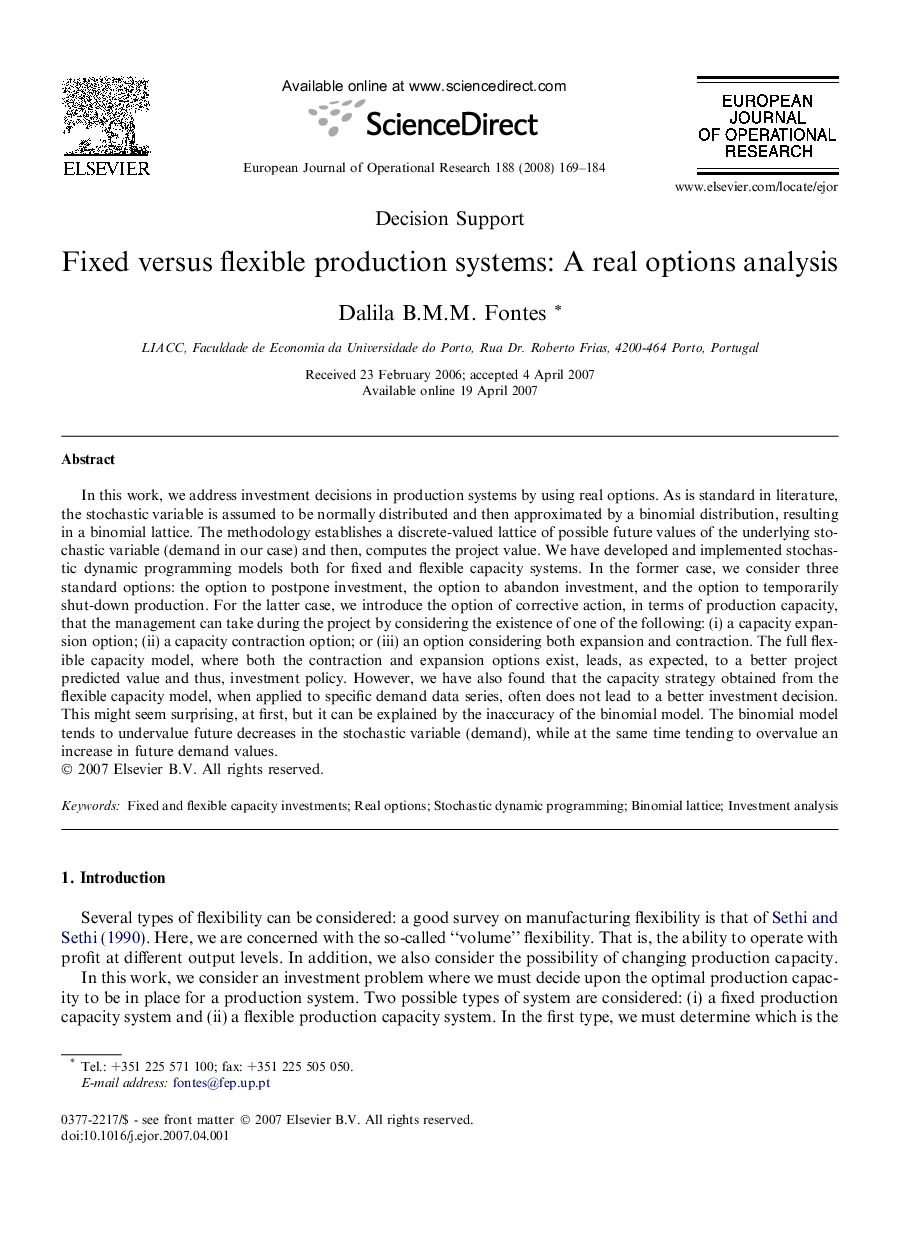| Article ID | Journal | Published Year | Pages | File Type |
|---|---|---|---|---|
| 477599 | European Journal of Operational Research | 2008 | 16 Pages |
In this work, we address investment decisions in production systems by using real options. As is standard in literature, the stochastic variable is assumed to be normally distributed and then approximated by a binomial distribution, resulting in a binomial lattice. The methodology establishes a discrete-valued lattice of possible future values of the underlying stochastic variable (demand in our case) and then, computes the project value. We have developed and implemented stochastic dynamic programming models both for fixed and flexible capacity systems. In the former case, we consider three standard options: the option to postpone investment, the option to abandon investment, and the option to temporarily shut-down production. For the latter case, we introduce the option of corrective action, in terms of production capacity, that the management can take during the project by considering the existence of one of the following: (i) a capacity expansion option; (ii) a capacity contraction option; or (iii) an option considering both expansion and contraction. The full flexible capacity model, where both the contraction and expansion options exist, leads, as expected, to a better project predicted value and thus, investment policy. However, we have also found that the capacity strategy obtained from the flexible capacity model, when applied to specific demand data series, often does not lead to a better investment decision. This might seem surprising, at first, but it can be explained by the inaccuracy of the binomial model. The binomial model tends to undervalue future decreases in the stochastic variable (demand), while at the same time tending to overvalue an increase in future demand values.
